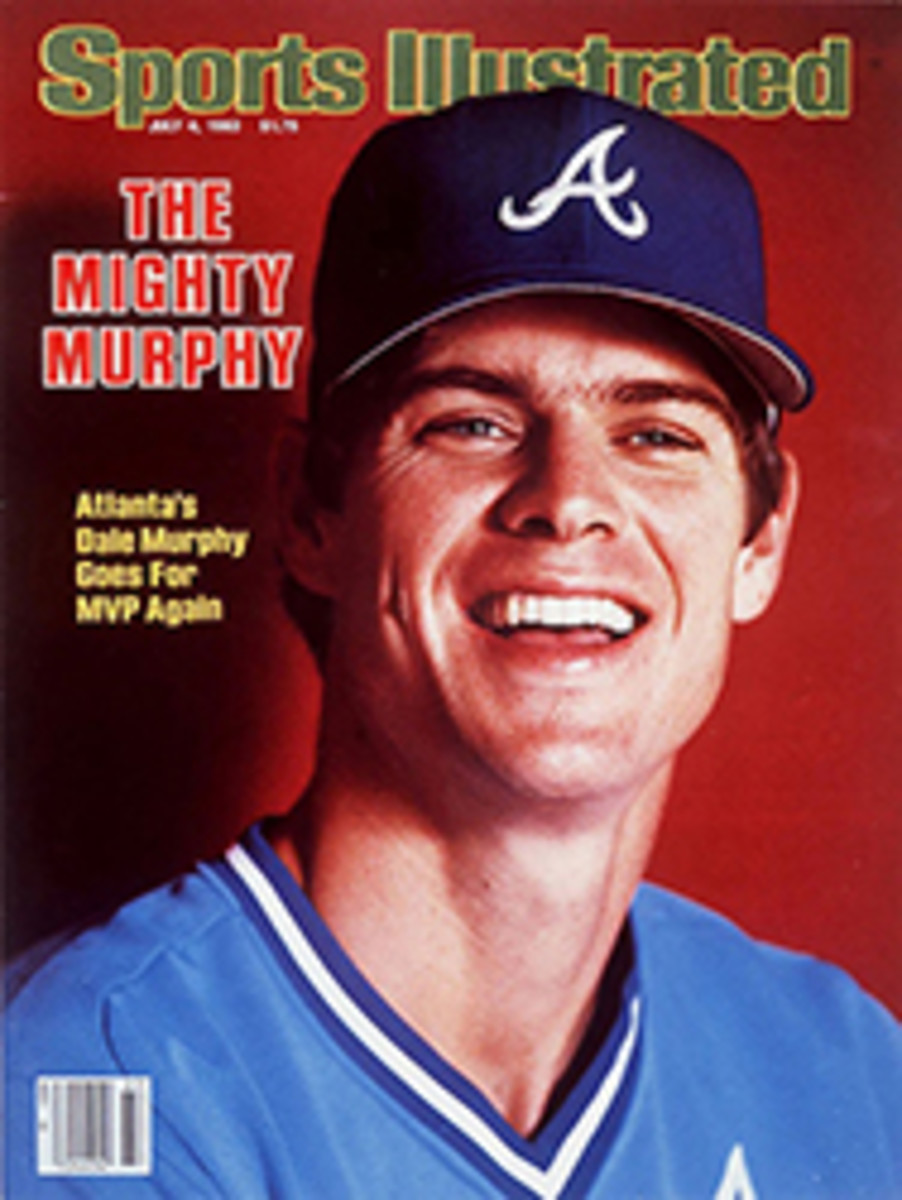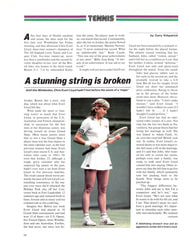
He's coming on strong
The way his trainer and close friend Gary Iacini sees him, Atlee Hammaker, the San Francisco Giants' brilliant young lefthander, is a snazzy Grand Prix race car. "Say you get yourself a Ferrari but it's not working quite right," says Iacini. "You put in new plugs and maybe a new transmission. That's the way we, Atlee and I, looked at his body—as a machine. We improved the parts, so now the machine is working fine. What you need next is a good driver. We've got one. Atlee now drives his own body."
And, it should be noted, he's driving it hard and fast. At week's end, Hammaker had won nine and lost only three for the third-place Giants and was leading the National League with a sparkling 1.52 ERA. His strikeout-to-walk ratio—80 to 15—was also the league's best for a starter. And three of those bases on balls were intentional. "Atlee is way ahead of his time in control and composure," says San Francisco Catcher Milt May. "What's most remarkable about all this," says Giants Manager Frank Robinson, "is that he's a 25-year-old lefthander, and lefthanders that age are usually wild."
There is, in fact, nothing wild about Hammaker, on the mound or off. The son of a career military officer of German descent and a Japanese mother, he was reared in a highly disciplined family that functioned as a closely knit unit, despite a peripatetic Grand Prix-circuit sort of existence. Colonel Charles Hammaker, U.S. Army (ret.), met Hammaker's mother, Saeko, in Japan shortly after the Korean War. Atlee was born in Carmel, Calif. while his father was stationed at nearby Fort Ord. From there, the Hammakers—Atlee has an older brother and a younger sister—moved to France, Georgia, Pennsylvania, Japan, Kansas, Okinawa and finally to Washington, D.C.
After attending high school in Alexandria, Va., Hammaker went to East Tennessee State on a basketball scholarship. He, his wife, Jenny, and their golden retriever, Austin, live off season on a farm outside Knoxville. "We were a military family," says Hammaker of his upbringing. "That was my father's influence. And we were close, the way Japanese families are. That was my mother's influence. I learned never to be satisfied with anything I did. I learned never to feel I was too good for anything or anybody [Hammaker is, to this day, a soft touch for street beggars]. And I learned to work hard for everything."
Those early lessons have produced a supremely confident yet humble young man whose work habits would weary a dray horse. Concerned after his rookie year in '82 that he was tiring in the late innings, Hammaker approached Iacini, an assistant trainer with the Giants, about improving his stamina. Iacini put Hammaker on a Nautilus and weightlifting program. He devised 14 different exercises for him, many involving the latest training aids, one of which, an isometric bar known as SportStick, Hammaker uses even between innings of games he's pitching. Iacini had his charge running 220-, 330- and 440-yard intervals. And then, with Iacini's approval, Hammaker adopted some karate routines he learned from Mike Krukow, a pitcher who moved to the Giants from the Phillies this year. Krukow had learned them from every pitcher's conditioning model, Steve Carlton. Krukow, Hammaker and, lately, bullpen ace Gary Lavelle work out for 45 minutes before each game, emerging from the privacy of the 49ers' locker room drenched with honest sweat. Then they participate in the team's regular pre-game drills.
Hammaker and Iacini examine the functioning of the Hammaker parts after each start. "If his legs seem tired, we work on them for the next start," says Iacini. "If his back is giving him trouble, we exercise there. If it's his lungs, we go to the bike machine." This extraordinary attention to detail extends beyond the merely corporeal. "If Atlee is having trouble concentrating, we get him working on positive thinking. We have him run miles alone, so he can get his mind together."
As might be expected, Hammaker observes a rigid diet. After a starting assignment, he begins with steak to build up protein; during the ensuing couple of days he switches to fish; and then he devours carbohydrates—pancakes for breakfast, spaghetti for lunch—on days he pitches.
Originally Hammaker's athletic skills seemed to be destined for the basketball court. As a kangaroo-ish 6'2" senior center for Mount Vernon High in Alexandria, he averaged 21.7 points and 12:3 rebounds a game. But in college he found that he was a 'tweener, a player not big enough to play center or forward, or adept enough as a ball handler to be a guard. A summer of pitching in Alaska, where he was 5-0 in the fast league there for college stars, persuaded him that he had a future in baseball.
Hammaker was signed out of college by Kansas City and was considered a hot prospect by the time he was traded to the Giants in March of '82 for a somewhat more established lefthander, Vida Blue. The trade is one Giants Executive Vice-President Tom Haller boasts of without provocation. Blue was 13-12 for the Royals last year and was dropped from the rotation after performing dismally early this season. In '82 Hammaker won 12, lost eight and walked only 28 batters in 175 innings, despite his tendency to tire in the late going.
This year his natural gifts—a 90-mph fastball that either sinks or sails, a vicious slider and a confusing change, plus his ability to throw the ball over the plate—have been enhanced by his increased strength and by a useful tip he picked up from Giants Pitching Coach Herm Starrette. "He had a tendency to hook his wrist before releasing the ball," says Starrette. "This caused him some soreness in the shoulder, because turning the wrist brought pressure there. I got him to keep his wrist level. It was a little awkward for him at first, but the kid is a perfectionist, and he's got it down now."
Hammaker's sharp control comes in large measure from the smoothness of his delivery and from his ability to concentrate so hard that even the noisy Candlestick cries of "At-lee! At-lee!" go unheard. But for all his intensity, while throwing the ball he looks as if he's more interested in checking for crabgrass on the mound. Hammaker will get the sign from his catcher, go into his windup and then, horrors, look straight down at the ground. "I just don't feel natural looking anywhere else," he explains. "I'll look at the spot where I'm supposed to throw the ball and then look down. But just as I release the ball I'll look up again and see the same spot. They tried to change this habit in Kansas City, to convert me into looking at the plate, but when I did it I felt my balance go all out of whack."
With the Giants, however, everything seems to be in whack. Says Starrette, "There are times I'll be watching him out there when I'll swear I'm seeing Steve Carlton pitch." There can be no higher commendation—for Carlton.
PHOTO

